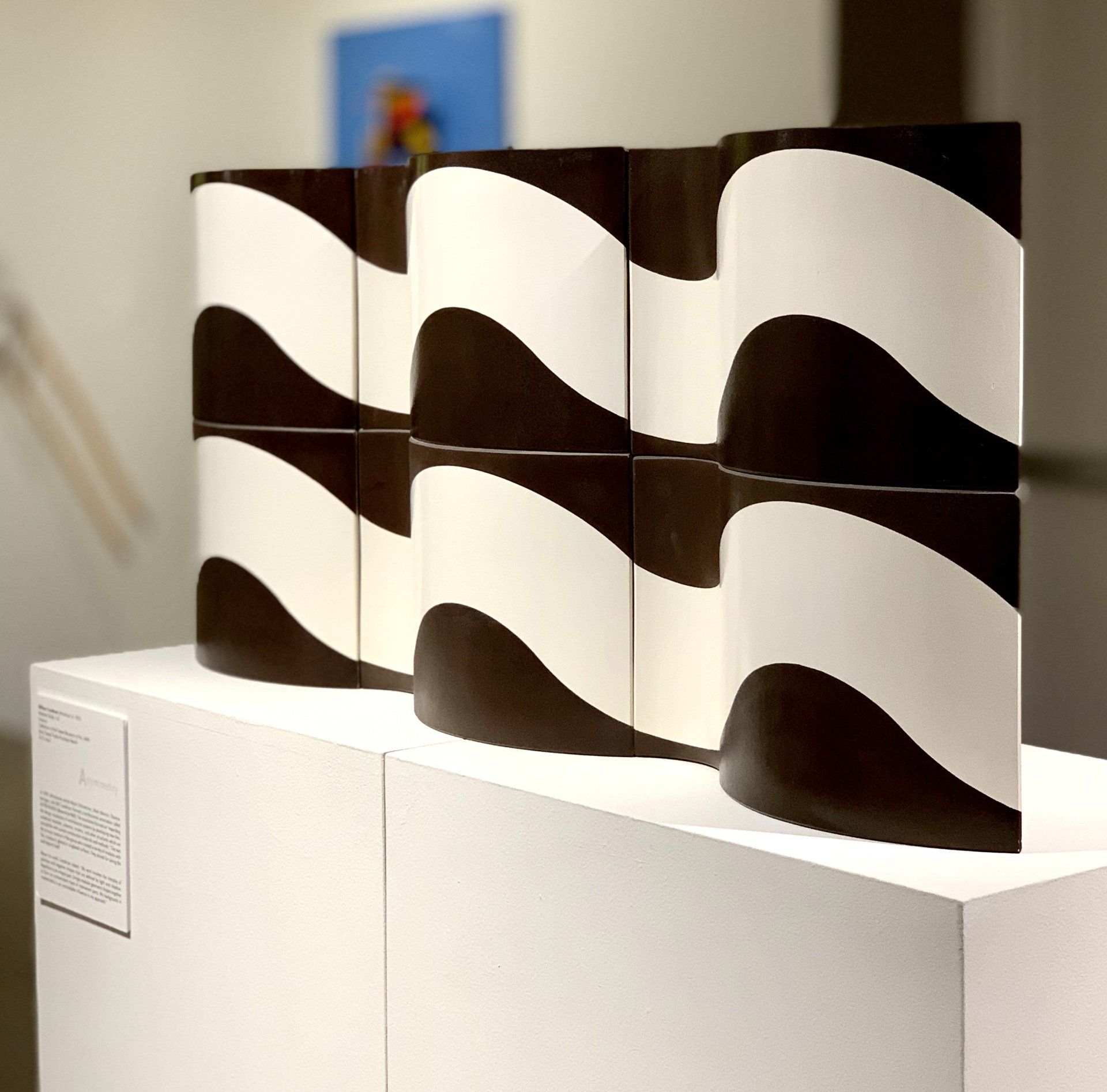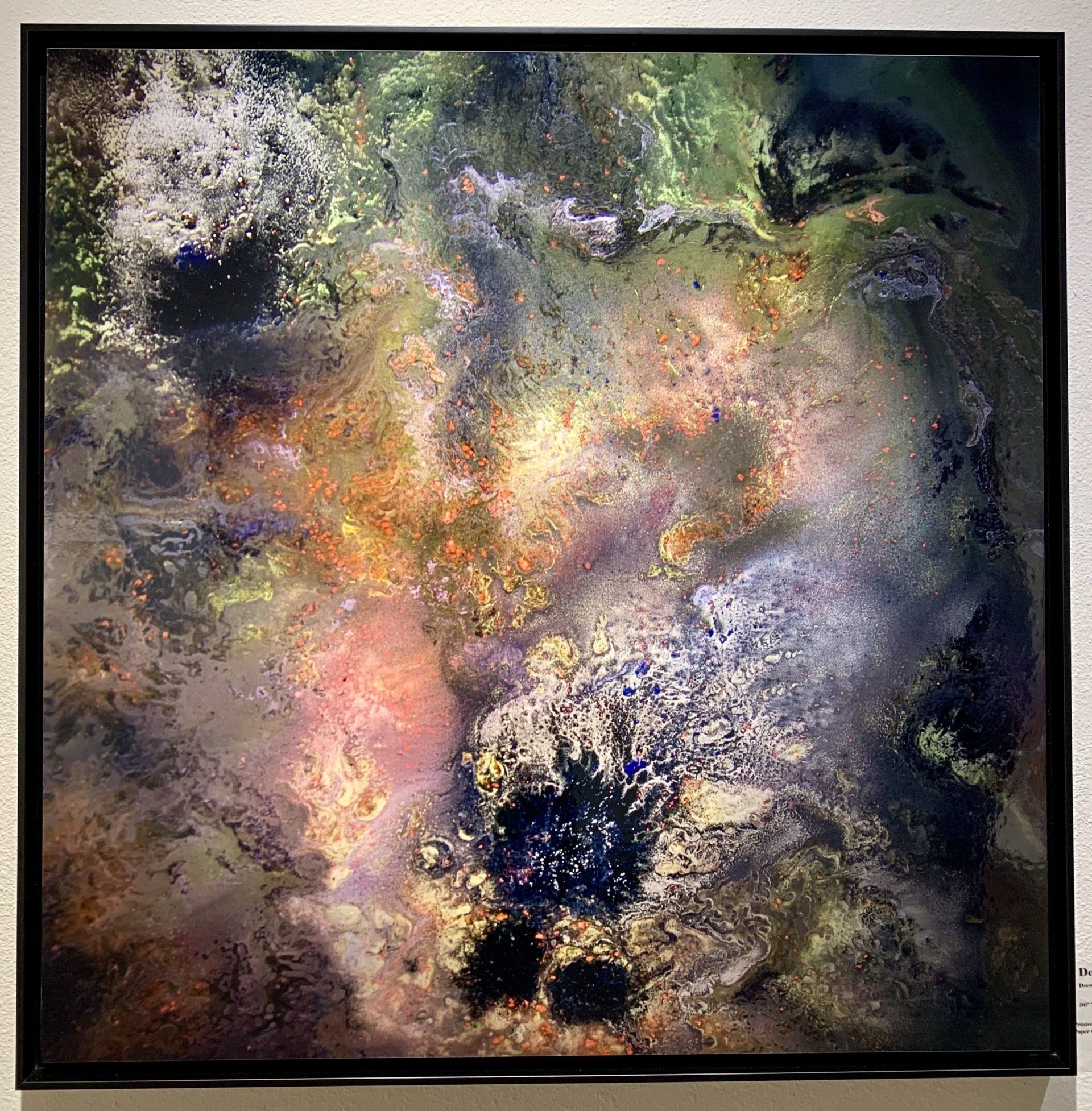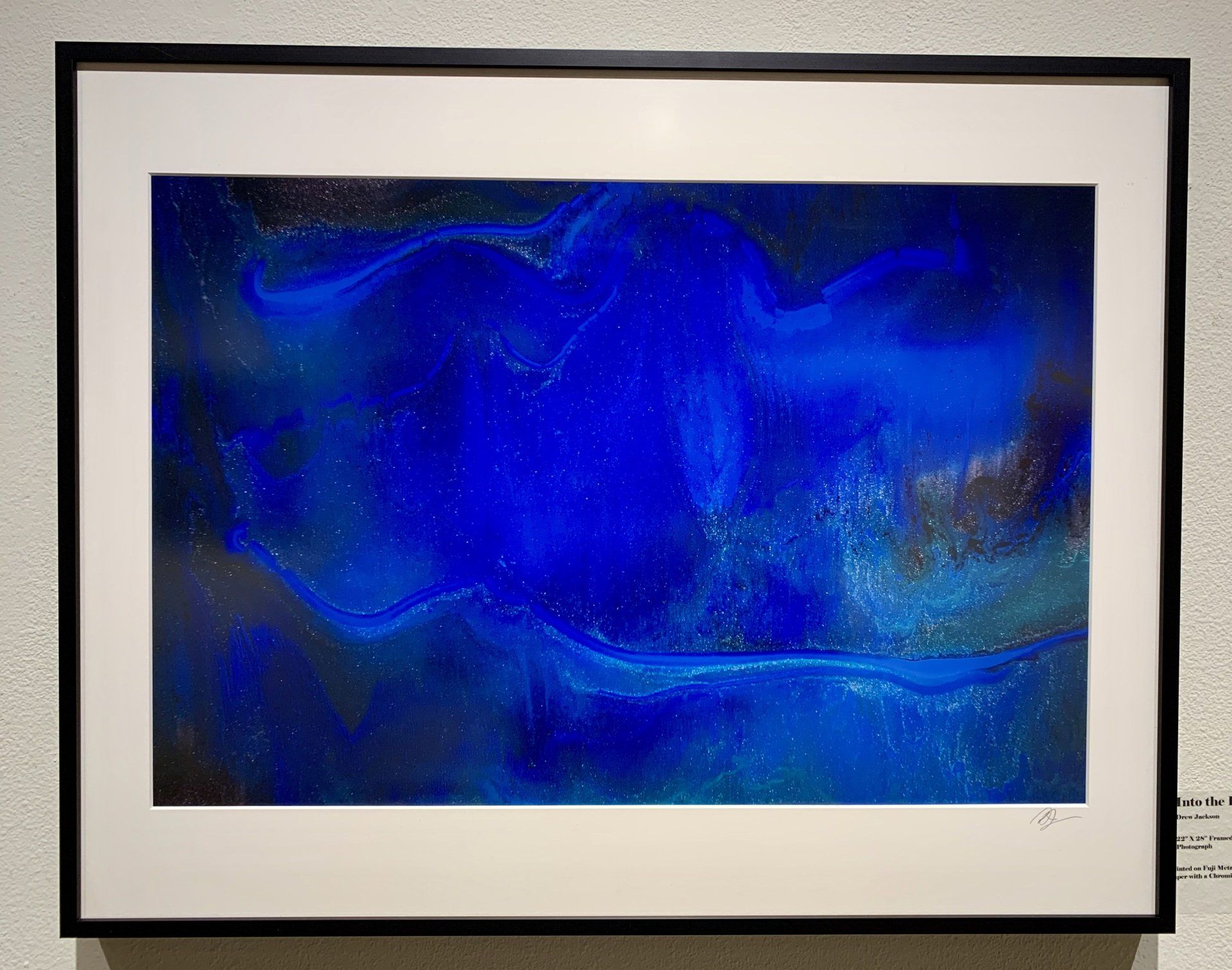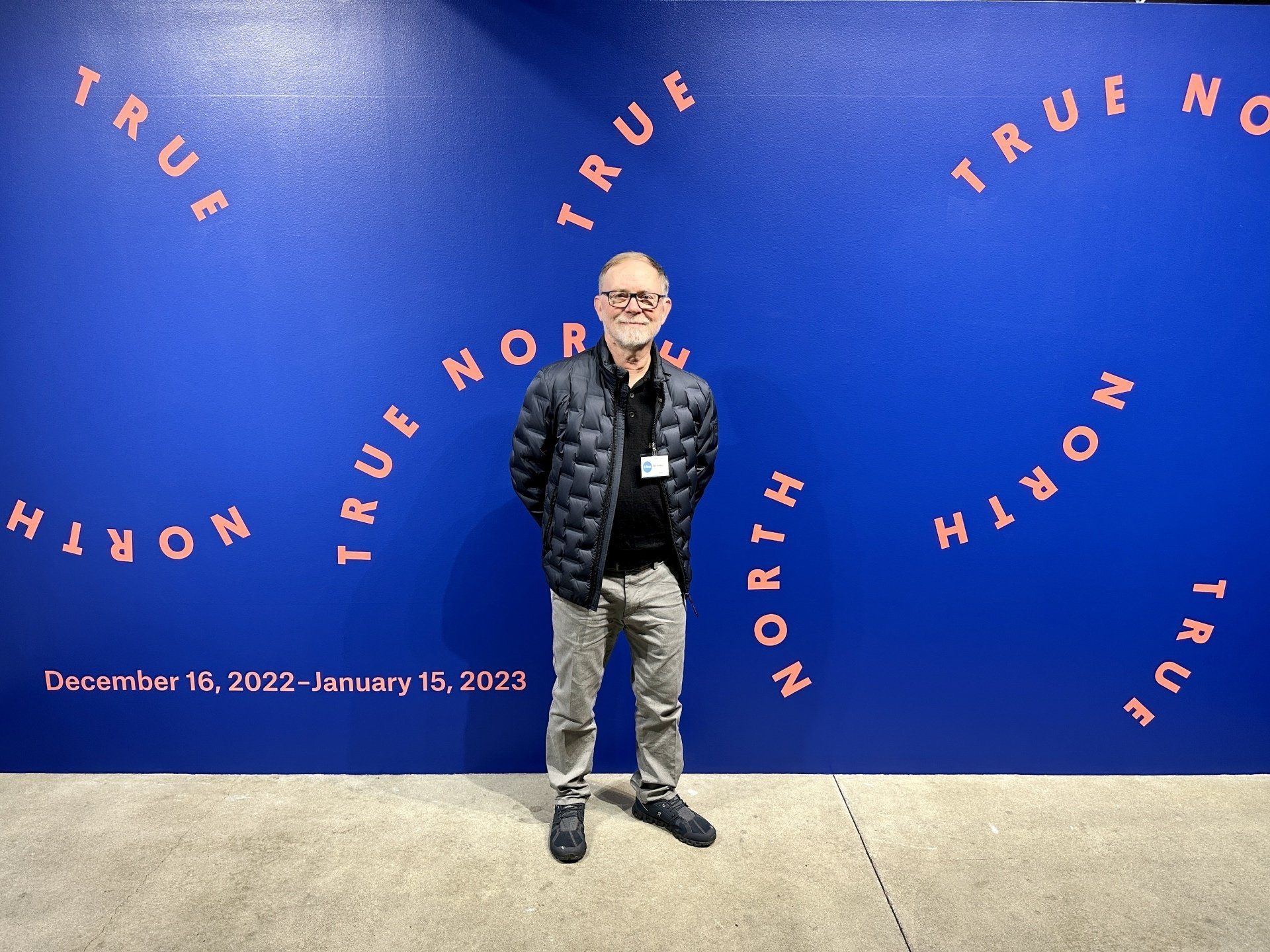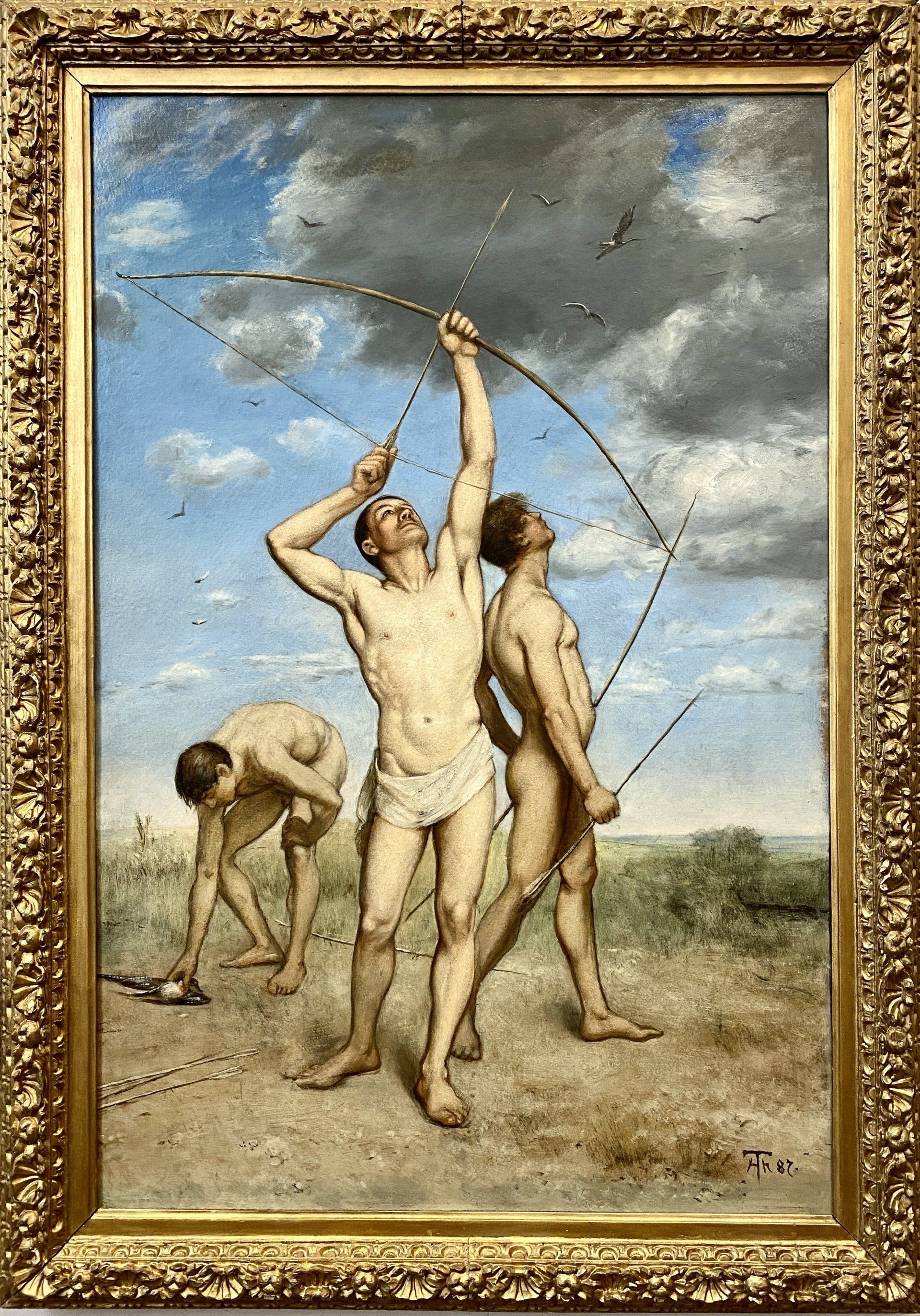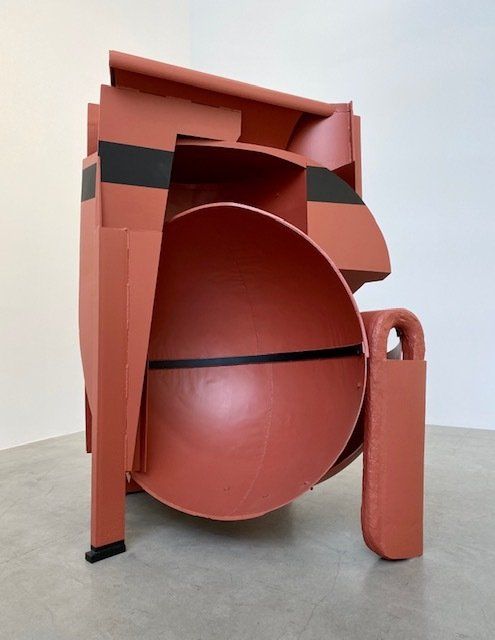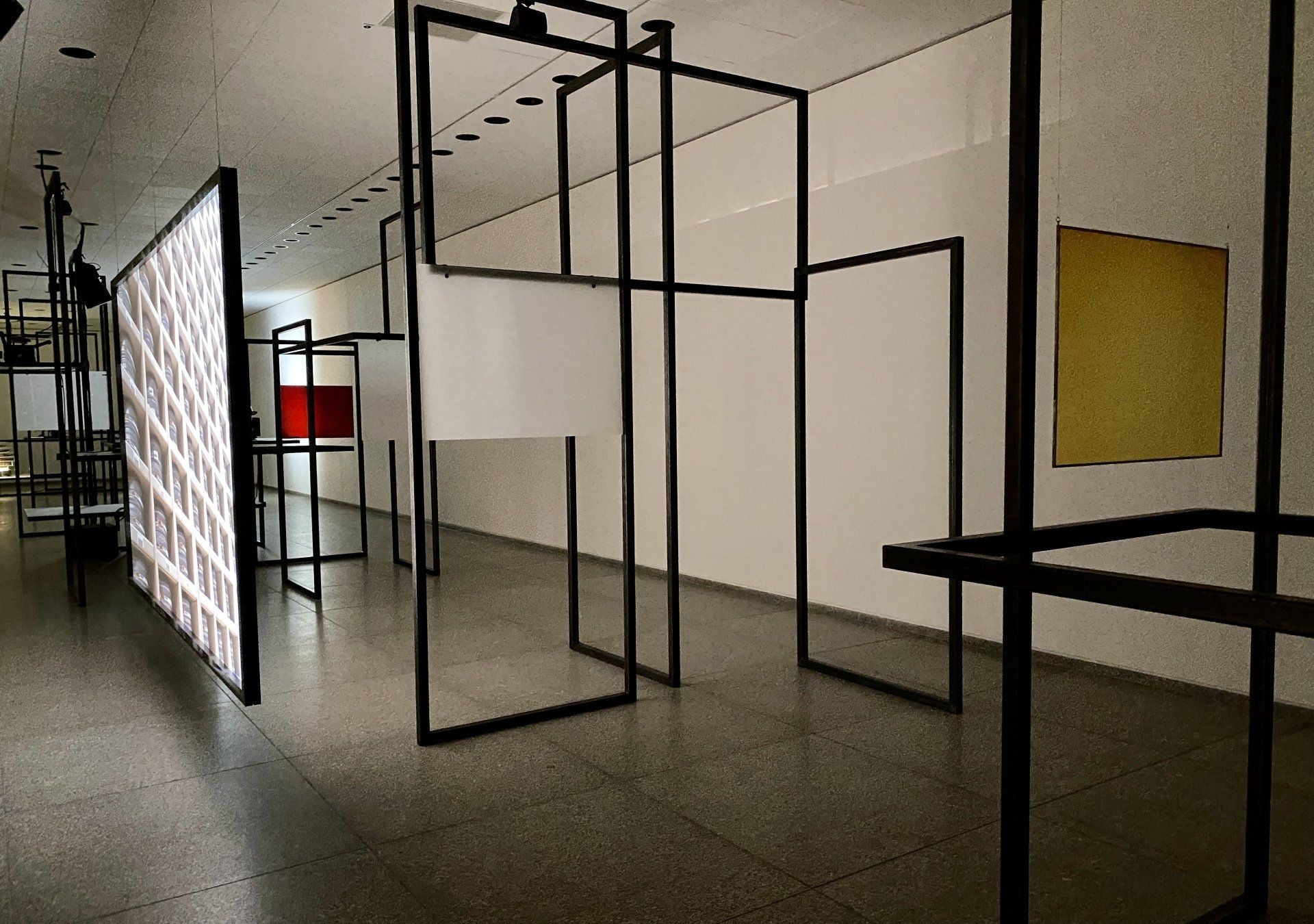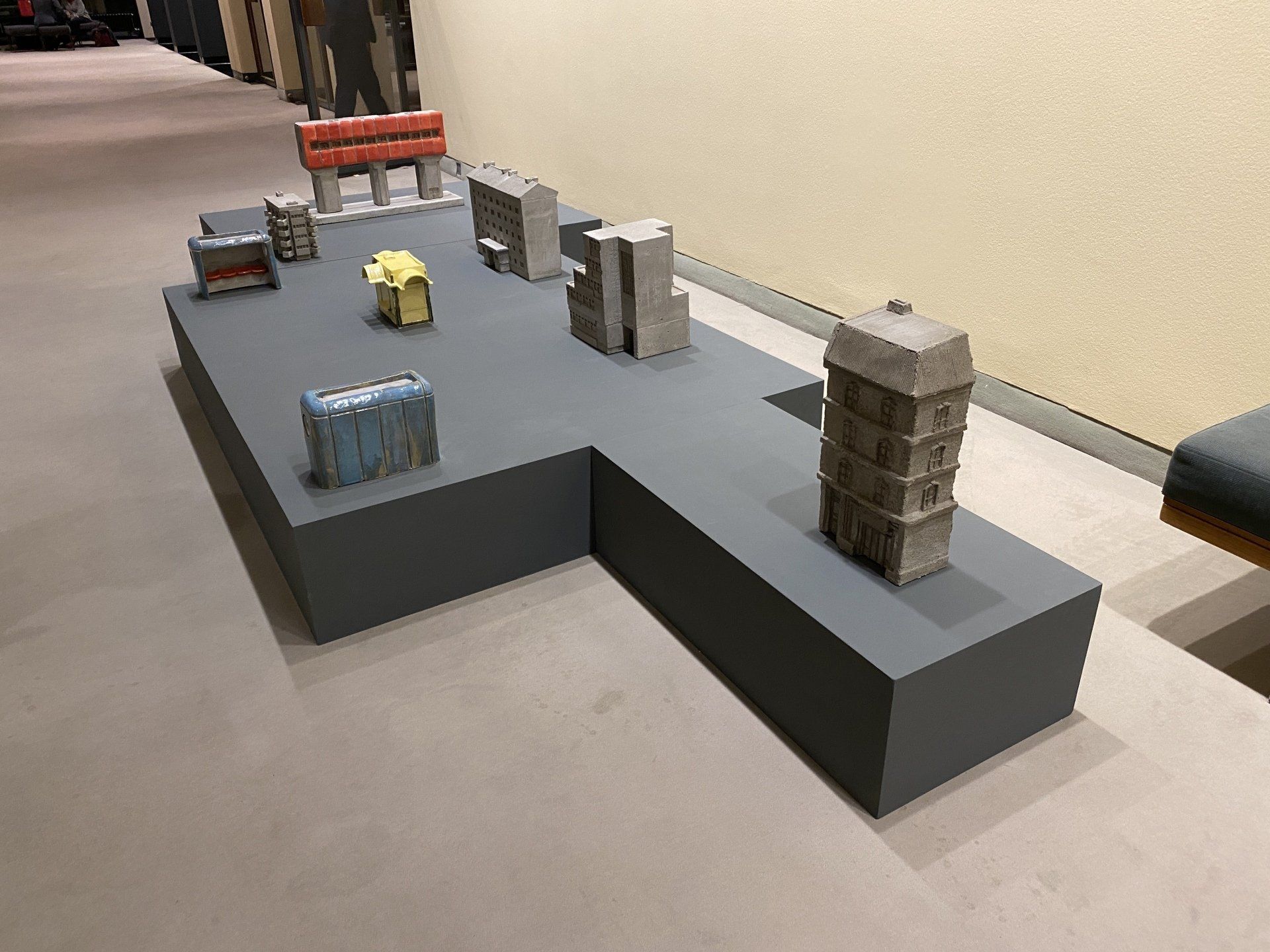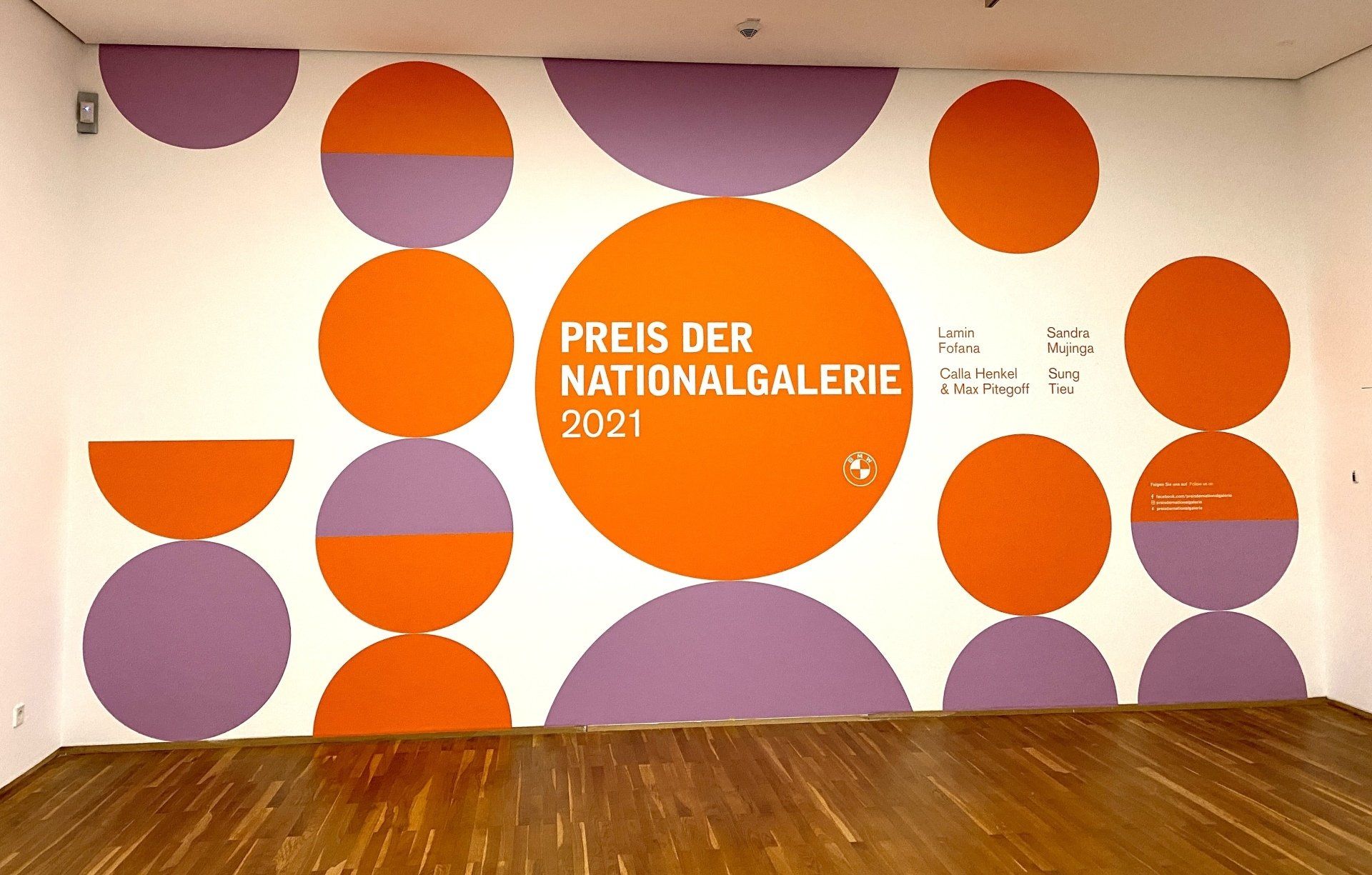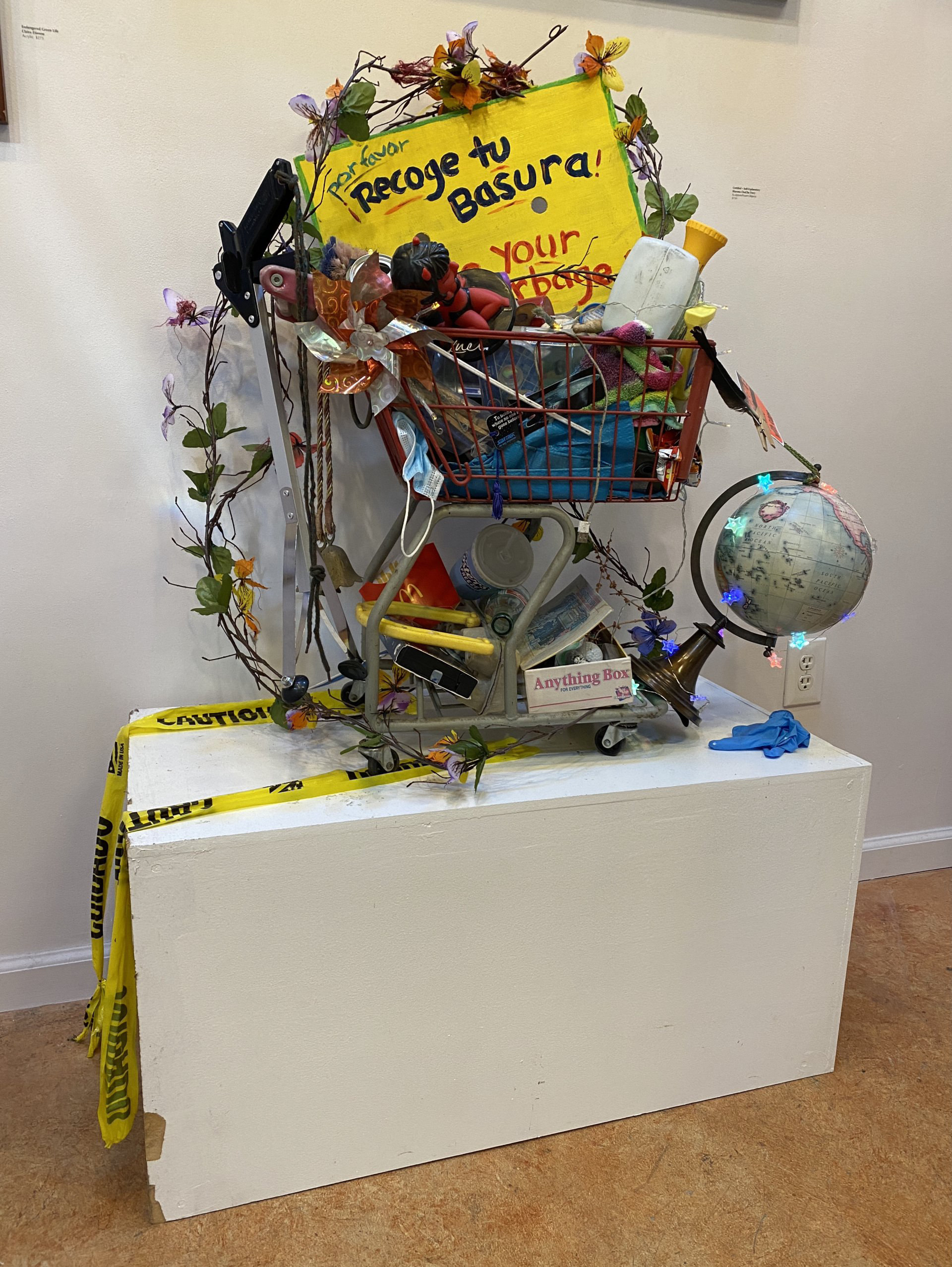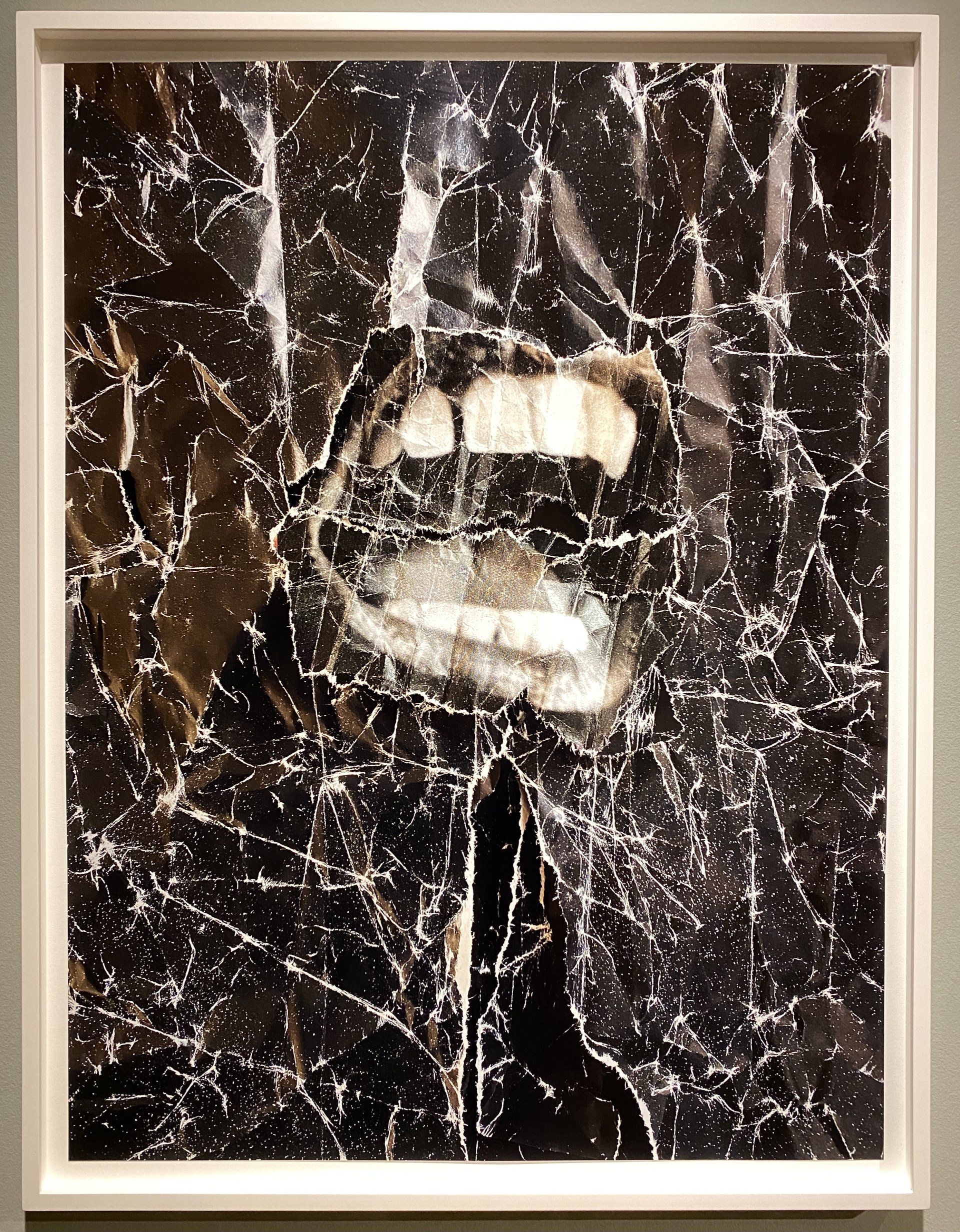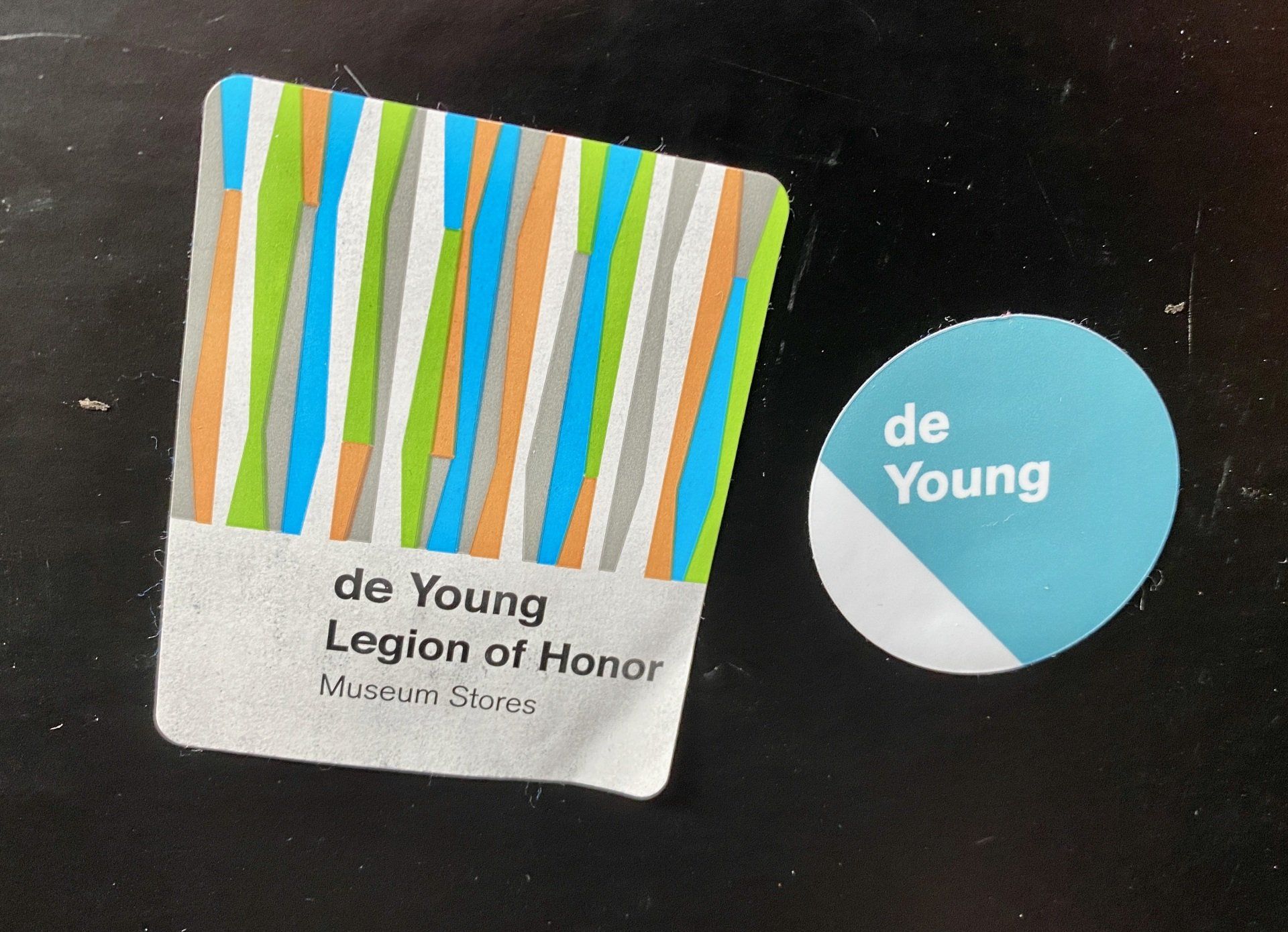Artist combines hands-on and digital techniques into a unique medium
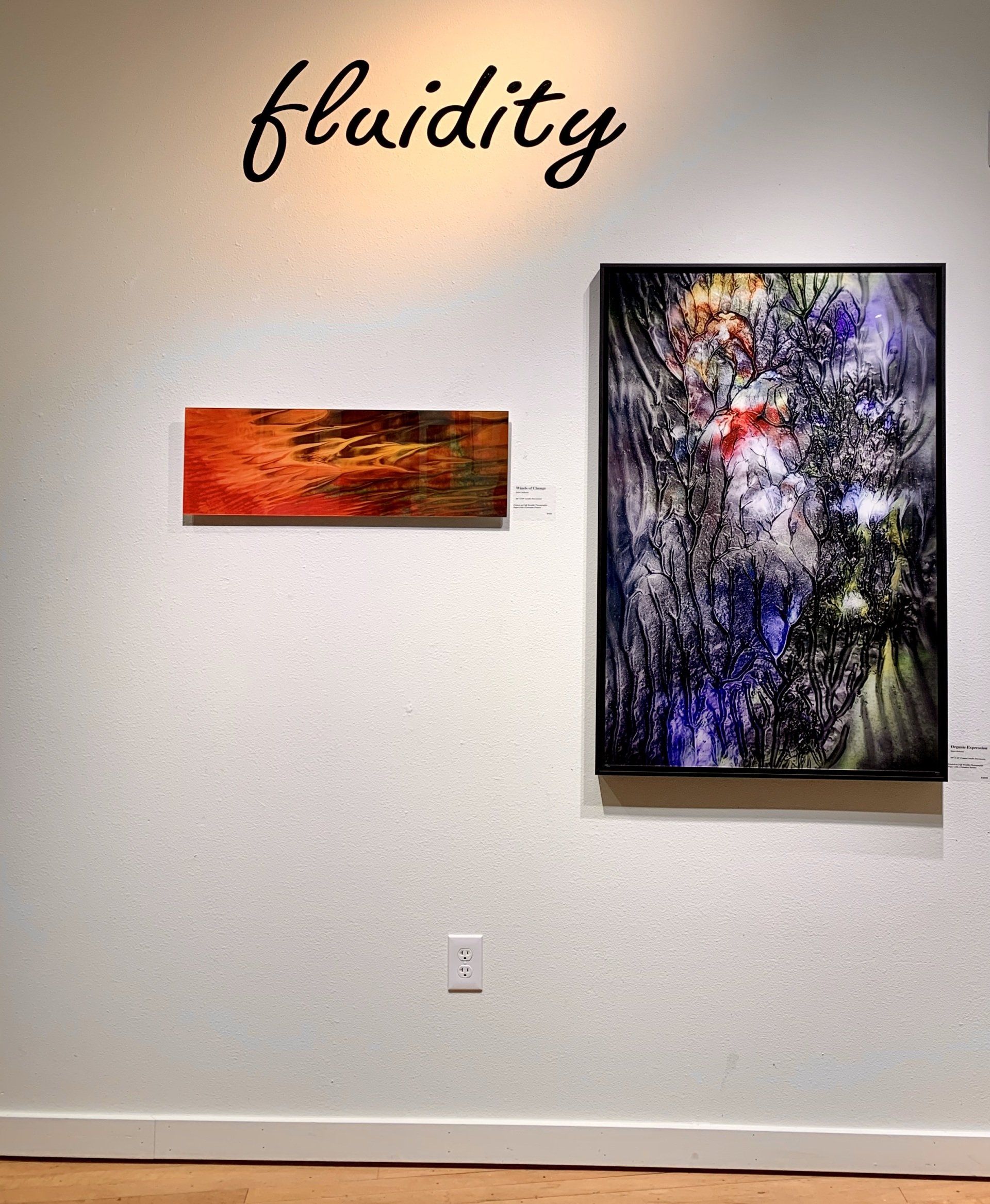
“Fire Within” is an aggressive firewall that pulsates and serves as a warning - like a wasp nest. Or alludes to the interior chambers of the human heart. This piece also has a feeling of erosion.
“Down Deep,” a baroque abstraction, has visual staying power and keeps giving to the viewer with following “re-visits.” There is a range of warms and cools and a variety of textures - ranging from spiky to gaseous. Jackson also attains a feeling of the ephemeral, to the point that you wonder if the picture will have changed slightly if you come back to it an hour later. It is tempting to go to the “2001 A Space Odyssey” narrative, but if you resist that reading and take the layers and veils of color and values at face value, that’s all you need to enjoy the ride. This 30” x 30” piece could well command a larger format. I can see this as a 10 foot x 10 foot piece holding court in the International Terminal at SFO or LAX or placed in the 1st floor lobby of any corporate skyscraper.
